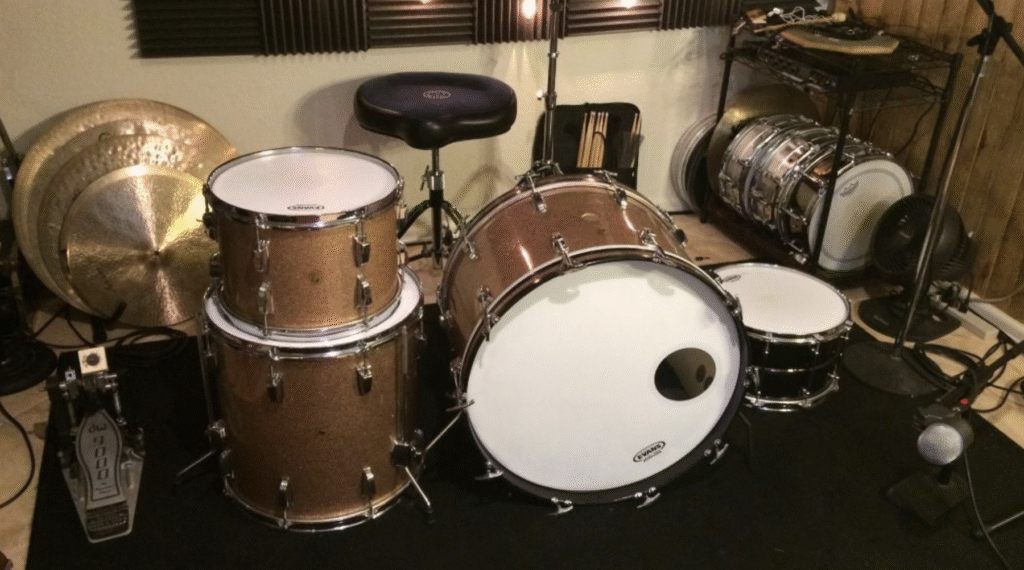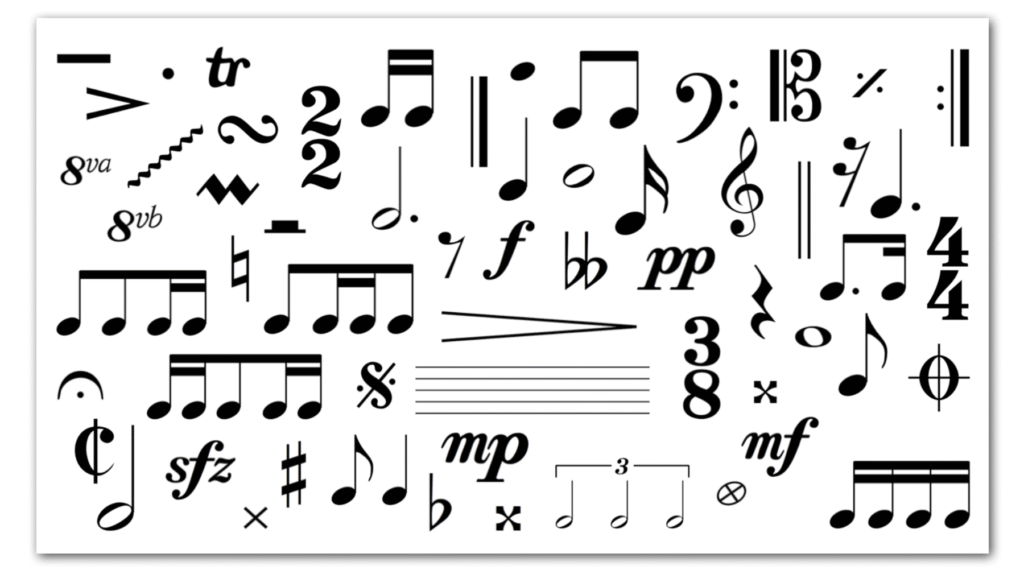Back in Black Drum Beat
The Back in Black drum beat is a simple heavy rock drum beat with an explosive fill that follows the riff of guitarist Angus Young. It kicks off AC/DC’s legendary track with raw power and perfect timing. If you’re learning drums, this beat is a must-try.
Phil Rudd, the drummer behind the groove, proves that simple doesn’t mean boring. In fact, the magic lies in how solid and consistent the rhythm feels. The simplicity of the beat makes the fill all that more unforgettable.
Once you’ve mastered this Famous Drum Beat try playing the whole song Back in Black by ACDC.


TIPS:
- Practise the drum fill by itself first.
- Notice the drum fill follows the guitar line in the fourth bar. Try singing the guitar line to learn the phrase. Also note the snare drum of the fill starts on the 2nd beat of the bar. The same as in all the other bars.
- Loosen the hi-hat cymbals and sit heavy on the bass and snare drums to capture the ACDC sound
Understanding the Structure
Let’s break the beat down. The Back in Black drum beat is in 4/4 time. This means there are four beats per measure. The groove uses:
-
Snare on beats 2 and 4
-
Bass drum on beats 1 and 3
-
Closed hi-hats playing eighth notes
- The drum fill is a series of syncopated 1/16th & 1/8th notes between the snare, bass & hi- hat
This layout makes it sound steady and driving. And the drum fill unites with the guitar to round off the four bar cycle. Every element is clear and purposeful.
Playing It Right
Many drummers can copy the rhythm, but few capture its feel. So how can you play it the right way?
First, focus on keeping your hi-hats consistent. They should be crisp and evenly spaced. Next, make sure your snare hits land with confidence. Avoid playing too lightly. You want that backbeat to pop.
Furthermore, your bass drum needs to lock in with the hi-hat. If your feet and hands drift apart, the beat will sound messy. Try using a metronome to stay in time. Gradually increase the tempo as your confidence grows.
Try learning the Back in Black Drum Beat with a Teacher @ kiwi drummer.com
Common Mistakes to Avoid
It’s tempting to want to add extra notes to the beat or to add fills, especially when the groove is quite simple. But in this case, less is more. Resist the urge to overplay. Concentrate on the quality of what you’re playing rather than adding any more notes.
Another common issue is rushing the beat. Although the tempo feels upbeat, it’s crucial to keep a laid-back feel. Think of it like a train chugging forward—steady and unstoppable.
Tips for Practicing
Here are a few simple ways to practice the Back in Black drum beat:
-
Loop the intro section and play along with the original track
-
Mute the drums in the song (if possible) and play over it
-
Record yourself to hear how tight your timing is
-
Slow it down until every note feels comfortable
-
Play it with a friend on guitar to get used to playing in a band setting
Additionally, you can write out the beat in drum notation. Seeing it on paper can help reinforce your memory and improve reading skills.
The Power of Simplicity
There’s a reason this beat still inspires drummers today. It’s not complex, but it grooves hard. It proves that great drumming isn’t always about showing off. Sometimes, it’s about holding everything together while making it sound effortless.
Phil Rudd mastered the art of keeping things tight and focused. His playing on Back in Black shows incredible discipline and musical taste. As you grow as a drummer, try to apply these same principles in your own practice.
Apply the Groove to Other Songs
Once you’ve nailed the Back in Black drum beat, try applying its structure to other songs. You’ll find that many rock tracks use similar foundations. This beat is the building block for so much of modern rock drumming.
You could even experiment with variations. For example, try playing the rhythm of the fill on different drums and cymbals- as Phil does later in the song.
Final Thoughts on the Back in Black Drum Beat
The Back in Black drum beat might seem basic, but it’s packed with lessons. From timing and tone to discipline and control, it teaches essential skills that every drummer needs. Moreover, it’s just plain fun to play.
Whether you’re jamming alone or playing in a band, this beat brings the kind of energy that never gets old. So grab your sticks, get behind your kit, and feel the power of this timeless groove.













